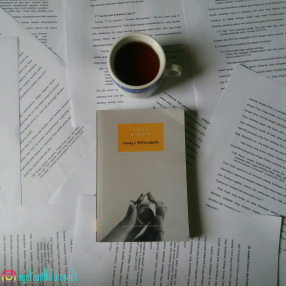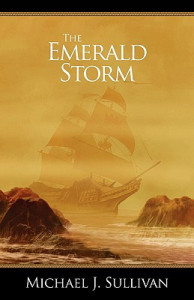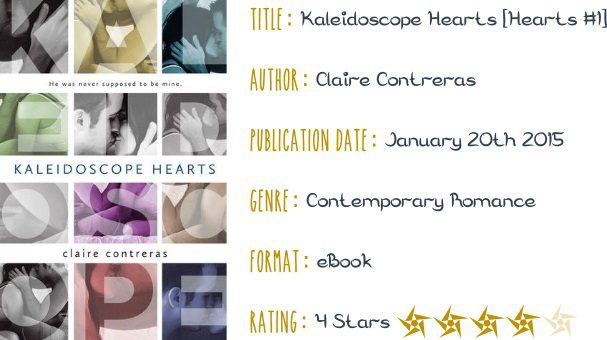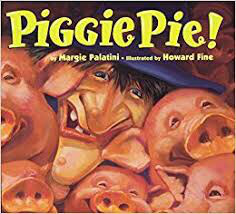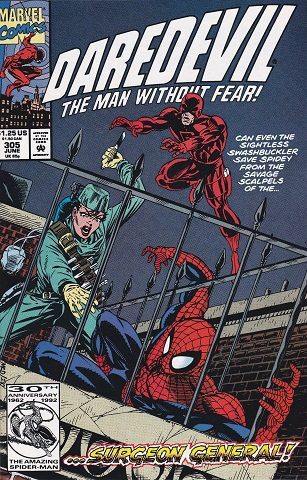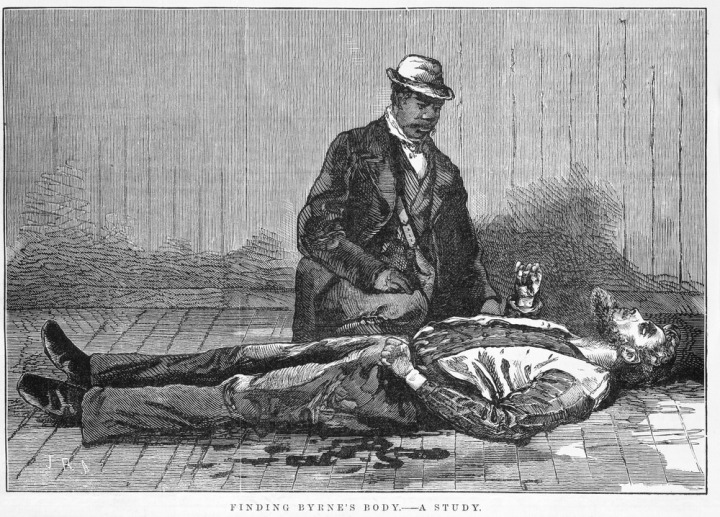
This engraving of a black tracker finding the dead body of Joe Byrne is a rather dramatised image that ironically downplays the drama of the scene. Joe’s body was recovered from the Glenrowan Inn after it had been set on fire. Father Gibney was the first to discover Joe’s body and darted from room to room looking or survivors. The bushranger’s body was dragged out of the raging inferno by police and propped up against a fence while the inn was reduced to smoking rubble. Hardly the sort of situation that would allow a person to calmly crouch next to the corpse (which incidentally was still clad in armour at the time). Yet, the body is unquestionably Joe Byrne’s corpse for one very good reason – this engraving is from a sketch of the corpse as it lay in a lock-up cell.
The artist behind this image is the renowned Julian Ashton after whom the Julian Ashton Art School in Sydney is named (he established this art school in 1890). At the time Ashton was new to Australia, having arrived in Melbourne in 1878, and was working as an illustrator for the Illustrated Australian News and as there was no bigger story at the time than the Kelly gang’s defeat at Glenrowan he was sent to create imagery of these dramatic events. Ashton was ushered into a lock-up cell in Benalla at night and by candlelight was tasked with sketching the decaying body of Joe Byrne onto a block of wood to be converted into a woodcut engraving. It is for this reason that the image is reversed. The correct image should be thus:
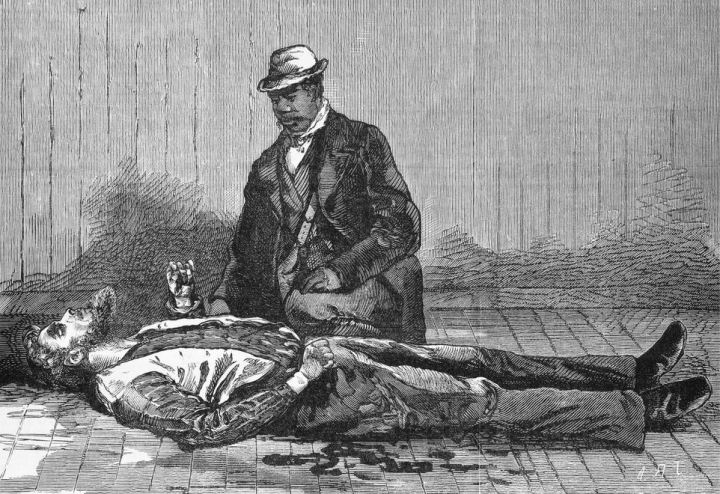
Furthermore, Ashton was still at the lock-up the next morning when the body was strung up for photographers while a morbidly curious crowd gathered around. Ashton is even captured in one of the photographs turning his back on the horrid spectacle captured by his friend John William Lindt. He considered it “the most miserable assignment I have ever had”. David Syme, proprietor of the Illustrated Australian News did not look on the situation with the same grimness as the Glenrowan issues signalled the first time the paper had made a profit.
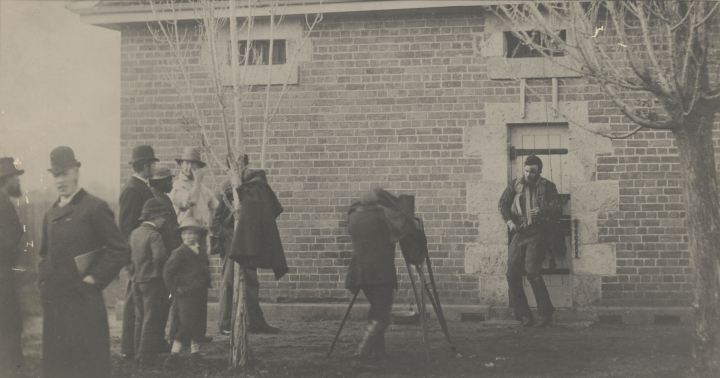 Julian Ashton stands at the left of the image with his sketchbook under his arm.
Julian Ashton stands at the left of the image with his sketchbook under his arm.
Ashton later produced the striking portrait of Ned in the dock of the Beechworth courthouse during his committal hearing that was splashed on the cover of the Illustrated Australian News. A year later Ashton began working for the Australasian Sketcher and moved to Sydney in 1883 and would spend years travelling Australia before taking up as an art teacher. Julian Ashton died in 1842 leaving a marvellous legacy for Australian arts and culture and some striking imagery to illustrate the histories of the bushrangers.
Selected Sources:
FINDING BYRNE’S BODY. – A STUDY. [picture] Melbourne : David Syme and Co. 1880
Joe Byrne’s body outside Benalla Police Station [picture] / J. W. Lindt.
“KELLY GANG.” The Sydney Morning Herald (NSW : 1842 – 1954) 25 January 1934: 13.
“CAPTURE OF THE KELLYS” The Dubbo Liberal and Macquarie Advocate (NSW : 1894 – 1954) 17 February 1934: 6.
http://adb.anu.edu.au/biography/ashton-julian-rossi-5073
https://julianashtonartschool.com.au/about/history/
Advertisements Share this:
